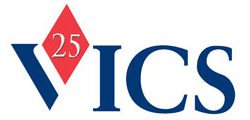The technology supporting item-level tracking is sound and continuously improving.
By Joe Andraski, Aug. 7, 2012
We know from experience that anything new in business—in terms of process and/or technology—takes time to be accepted. There are always a myriad of reasons why companies put off change. There is competition over investment dollars and a wide variety of new technologies in which a firm can invest. Then there is the risk: Will the technology deliver the promised benefits?
In the case of radio frequency identification (RFID), the time it takes from talking and piloting standards-based item-level tagging to broad-scale industry adoption and use is going to take less time than was required for businesses to embrace the bar code. In my opinion, the technology supporting item-level tracking is sound and continuously improving. JCPenney’s announcement that it plans to adopt EPC-enabled RFID chain-wide by next February is a major endorsement, to say the least.
Most retail implementations have been in the apparel sector, on products requiring rapid replenishment. JCPenney is moving beyond that. CEO Ron Johnson also sees an opportunity to remove cashiers from the checkout process, thereby reducing the company’s operating expenses by 10 percent. So in what seems like a New York minute, the business case has gone from improving inventory management and the consumer experience to reducing the cost of store operations.
Another application that will deliver major benefits is electronic proof of delivery (EPOD) based on the Electronic Product Code (EPC). The amount of accounts-payable and receivable-administrative time required to process shortages for retailers and suppliers is substantial. The unquestionable accuracy that RFID provides can streamline the process, ensuring inventory accuracy as well.
So, what are the ingredients for moving forward with EPC-enabled RFID adoption at the item level? The technology is well-established, as is the business case. The key considerations are the same ones found in any other initiative: internal trust, external trust, collaboration and a belief that everyone wins. I’ll address each of these considerations below.
Internal trust: There must be trust between individuals, departments and divisions. If this bond does not exist, then there will be an air of second-guessing within a company. Progress will be stalled, as will any potential impact on effectiveness and efficiency. There is much more to be said about the importance of internal trust—too much for this article, but I’ll try to address that topic in a future column.
External trust: Developing trust with trading partners, solutions providers, logistics companies and so forth is critical, and is often more difficult to achieve. It typically takes years for strong, trusting relationships to develop into partnerships. The skills of all parties must be developed, with each contributing to an RFID project’s success.
Collaboration: Practically every article written today contains some reference to the importance of collaboration. It’s much more than an attitude. Three key aspects of collaboration are accurate product information, a willingness to work together to affect change, and an understanding of your company’s internal strengths and shortcomings, as well as those of your trading partners. And the industry collaboration that is—and has been—behind the transformation of today’s retail supply chain through EPC RFID has been impressive. It’s a true force of nature.
Win-win: Developing and maintaining a win-win attitude is as important as the other attributes mentioned above. This is largely a cultural attitude, and comes with executive leadership that is followed by success. Given the number of players involved in an item-level RFID implementation, the power of all parties pulling together and enjoying success is a powerful win-win formula. This attitude also tends to spread externally as trading partners work in unison, implementing the technology in a standardized way that helps move not only their business forward, but the entire retail community as well.
Many retailers and suppliers have come together as part of the VICS Item Level RFID Initiative to develop standardized ways in which to deploy GS1 standards, including the Electronic Product Code. By working together to reduce friction in the supply chain, companies are creating the foundation for successful RFID deployments. I encourage other retailers and suppliers to join the effort, and to become part of the future. To join the initiative, visit www.vilri.org.
 English
English Español
Español Français
Français Italiano
Italiano 中文(简体)
中文(简体) Nederlands
Nederlands Deutsch
Deutsch Cрпски језик
Cрпски језик Română
Română Svenska
Svenska

